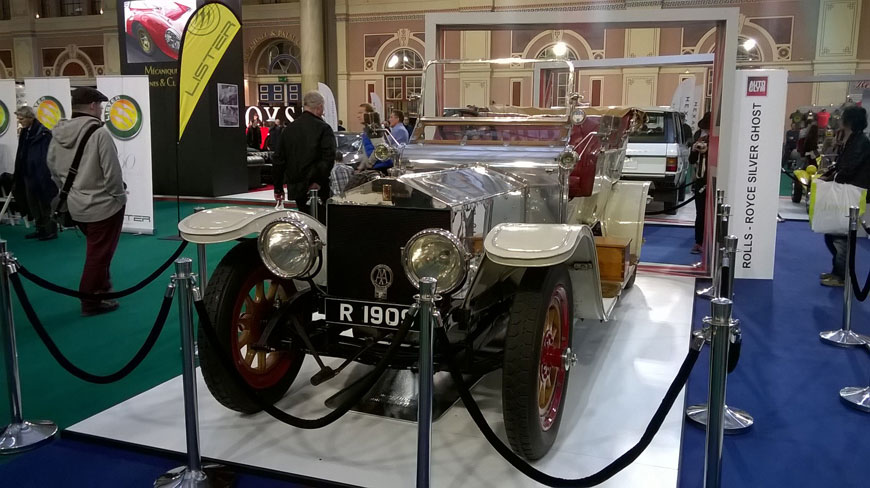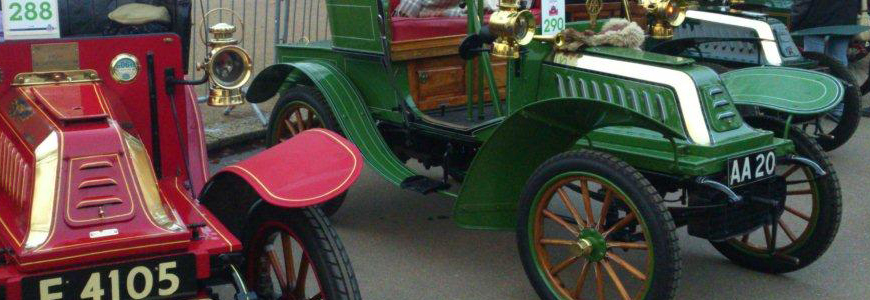
Three of the National Motor Museum’s veteran cars were put through their paces on the 2015 Bonhams London to Brighton Veteran Car Run.
London to Brighton
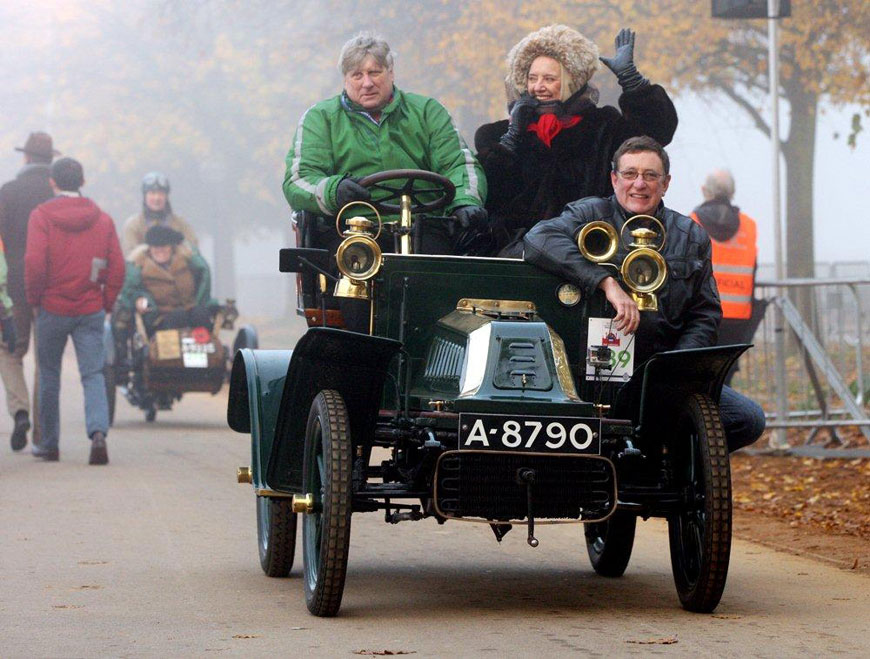
Every year, hundreds of pre-1905 vintage cars gather in London’s Hyde Park for the start of the Bonhams London to Brighton Veteran Car Run. Ahead of these historic machines and their occupants (who are usually wrapped up in thick coats and scarves) lies a 60-mile route which takes in such London landmarks as Horse Guards Road, Parliament Square and Westminster Bridge, before heading down to Brighton and the finish line at Madeira Drive. It is a stern test of the reliability of any veteran car.
This event marks the original Emancipation Run of 1896, which was held to celebrate the easing of restrictions on early motorists. Speed limits increased, while it was no longer necessary for a man to walk ahead of a motor car carrying a flag. As a result, a red flag is symbolically destroyed at the start of the London to Brighton Veteran Car Run.
The National Motor Museum has participated in the event for many years and for 2015, three of the museum’s veteran cars took part. Lord Montagu got behind the wheel of the 1903 Daimler 22hp, while his brother Jonathan drove the 1903 De Dion Bouton 6hp. Senior Engineer Ian Stanfield, and Museum Manager and Chief Engineer Doug Hill, shared the driving of the museum’s second De Dion Bouton, a 1904 6hp model, while Beaulieu One Hundred member Johanna White was in the passenger seat.
All three cars completed the run without incident, motoring through the morning fog to be greeted by sunshine in Brighton. Watch the 2015 London to Brighton Veteran Car Run as seen from the 1904 De Dion Bouton…
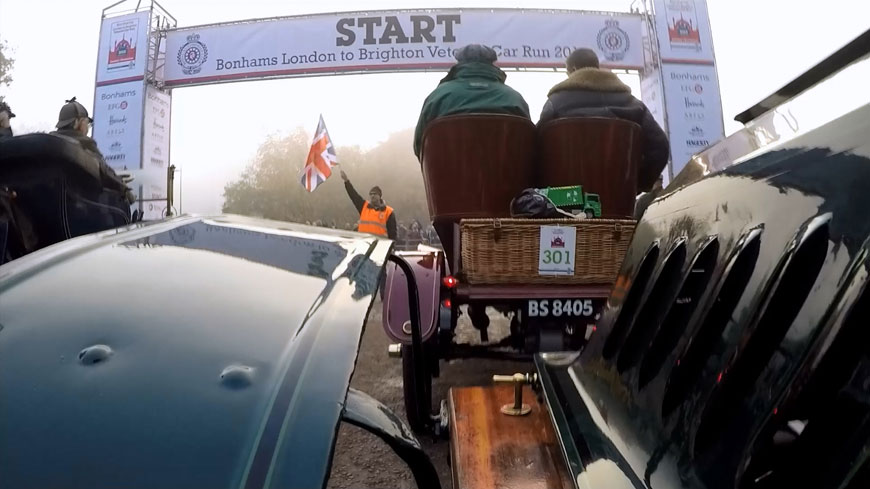
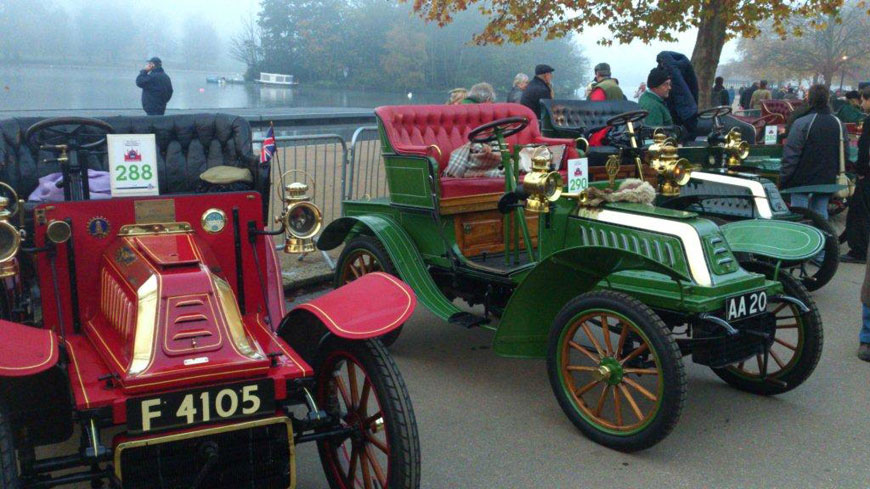
However, preparing the Daimler for the run had been a race against time for the National Motor Museum workshop engineers. Persistent overheating throughout the 2014 London to Brighton Run had been traced to heavy corrosion of the radiator end plates, which was ruining the circulation of coolant. The old end plates were three-dimensionally scanned, before being recreated in alloy using 3D printing. These new end plates were received just in time, with the car being reassembled just days before the event. This hard work paid off, as the Daimler ran better than it had done for several years.
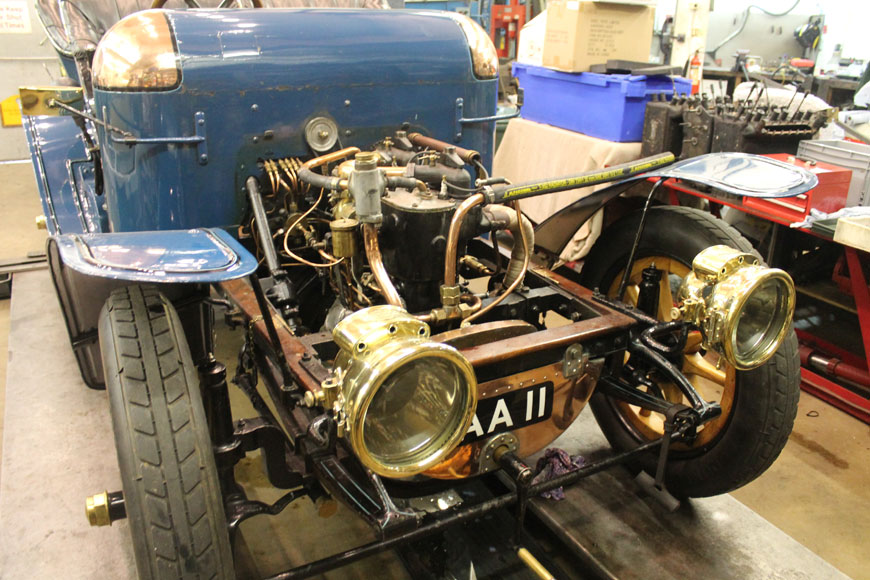
That same weekend, two other cars from the National Motor Museum collection were also in London, for the Classic & Sports Car Show at Alexandra Palace. In tribute to the late Edward, Lord Montagu, the 1930 Bentley ‘Blower’ 4.5-litre was on display in the grand Palm Court entrance hall, while the 1909 Rolls-Royce Silver Ghost was part of a selection of the greatest British cars of all time.
